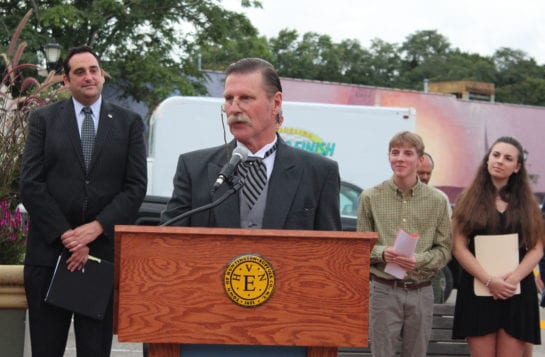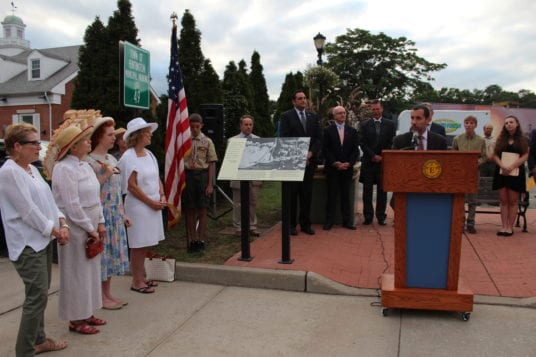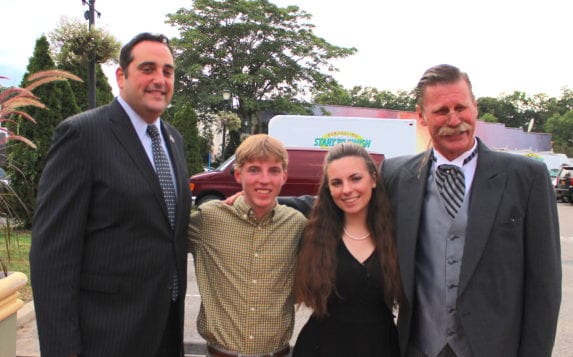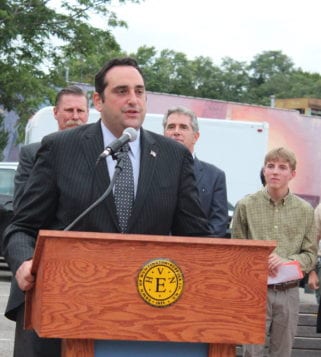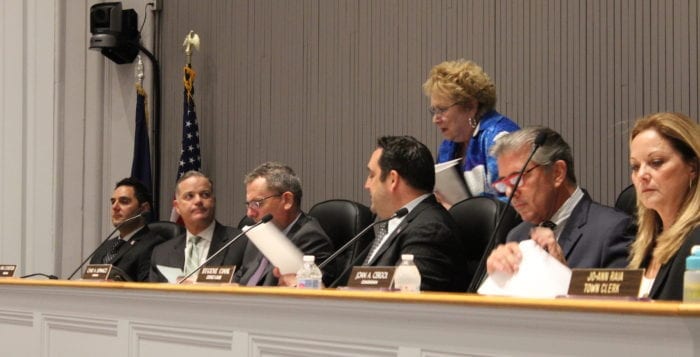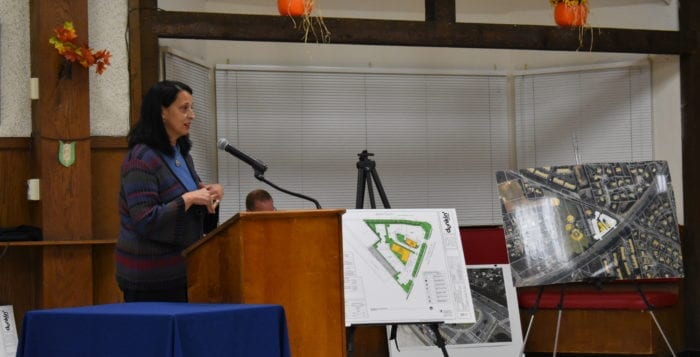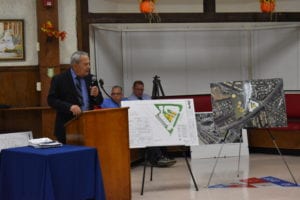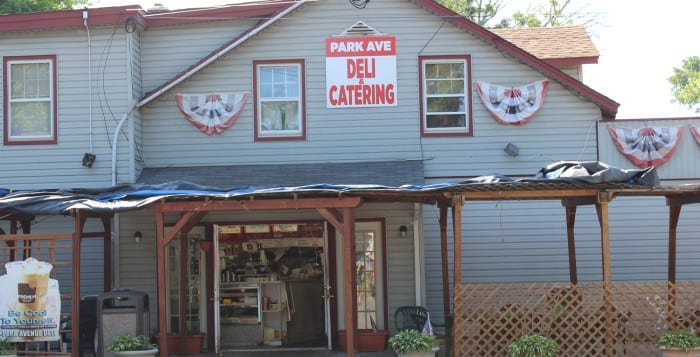Huntington High School students have given a presidential gift to the Town of Huntington that is already being called “timeless.”
Huntington town officials unveiled a new historic marker Sept. 21 in Municipal Lot 49 on New York Avenue commemorating a speech given during the town’s 250th anniversary celebration in 1903 by former President Theodore Roosevelt’s (R).
“In doing so today, we are not only honoring the president who came to address the residents of our town, but the importance of the legacy he left behind,” said Katelyn Sage, a senior at Huntington High School.
“Roosevelt’s visit wasn’t only very powerful because he was a sitting president coming here for the anniversary of a great town, but he also started the study of historical remembrance here in Huntington.”
— Chad Lupinacci
Sage and Huntington senior Luke Farrell have worked together during the past year to research Roosevelt’s 1903 visit to Huntington with Joseph Levy, Huntington school district’s chairman of humanities. After hours of research, the students learned a committee of local women searched through attics, basements and barns to pull together a collection of artifacts from the town’s Colonial era ahead of the presidential visit, according to Sage. The committee and collection served as the foundation of the current Huntington Historical Society.
“Roosevelt’s visit wasn’t only very powerful because he was a sitting president coming here for the anniversary of a great town, but he also started the study of historical remembrance here in Huntington,” Supervisor Chad Lupinacci (R) said.
On the Fourth of July in 1903, Roosevelt gave a speech praising civic-minded virtues to a large crowd gathered in an empty field now near the intersection of New York Avenue and Gerard Street in Huntington. It was reenacted by Theodore Roosevelt impersonator Leer Leary at the unveiling ceremony Sept. 21. A short excerpt is also written on the historic marker.
“In civil life, we need decency, honesty. We are not to be excused as people if we ever condone dishonesty,” the supervisor said, reading the selected Roosevelt quote. “That’s advice to heed for our representative government at all levels, whether it’s the local level, state level or national level.”
“In civil life, we need decency, honesty. We are not to be excused as people if we ever condone dishonest.”
— Theodore Roosevelt’s 1903 speech
Roosevelt was only the second sitting president to visit Huntington, according to Lupinacci, after George Washington, who dined at the former Platt’s Tavern in 1790. No sitting president has visited the town since. A traditional blue-and-gold historic marker was erected in 1932 by the New York State Education Department near the intersection of Park Avenue and Route 25A to mark Washington’s visit.
“Luke, Mr. Levy and I have researched and organized this project in order to commemorate an important historic event that not only happened in our town, but has yet to be acknowledged,” Sage said.
The marker commemorating Roosevelt’s visit, funded by Huntington High School’s student government, bears a different design. The students choose to install a plaque that displays a black-and-white photo of the occasion, the quote from Roosevelt’s speech and a short caption describing the historical significance of the event.
“I congratulate them for doing a wonderful job commemorating a period from 115 years ago,” Town historian Robert Hughes said. “The quote they selected reflects modern-day America as well. This is a timeless historic marker.”


